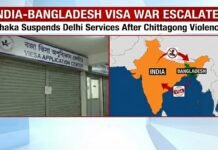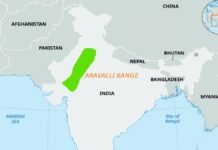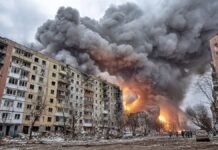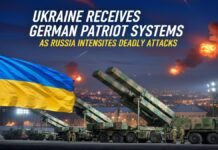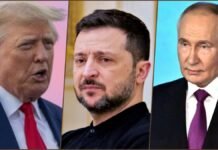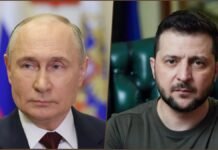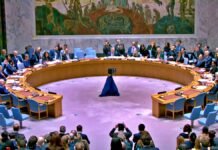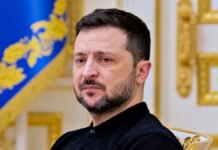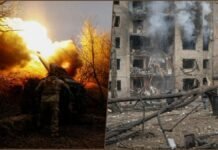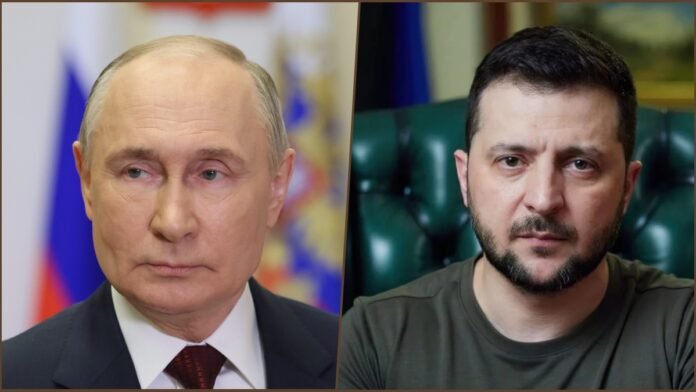
Key Points
- Russian troops have infiltrated central, northern, and northeastern sections of Pokrovsk, claiming control of over 60 buildings in urban warfare
- Ukrainian battalion commander reports forces are “nearly surrounded” but continuing defensive operations amid fierce fighting
- Pokrovsk’s population has plummeted from 60,000 pre-war residents to approximately 1,200-1,500 civilians, with evacuation now deemed impossible
- If captured, Pokrovsk would be Russia’s largest territorial gain since Bakhmut in May 2023
- Battle has transformed from strategic logistics fight into symbolic conflict, with most supply routes already destroyed
- Ukraine has fortified defensive positions west of Pokrovsk to prevent further Russian advances
Kyiv: Russian forces have penetrated multiple districts of Pokrovsk, transforming the eastern Ukrainian city into a battleground characterized by brutal house-to-house combat reminiscent of the prolonged battles for Bakhmut and Avdiivka. A Ukrainian battalion commander, speaking anonymously to CNN for security reasons, described the dire circumstances: “The situation is very difficult, with fighting all around, shelling in urban areas, and attacks from all types of weapons. We are almost surrounded, but we are used to it”.
Ukrainian forces from the 7th Rapid Reaction Corps and the Wolves of Da Vinci battalion are engaged in desperate defensive operations against overwhelming Russian numbers. Serhii Filimonov, commander of the Wolves of Da Vinci battalion, estimated that Russian forces control more than 70% of Pokrovsk as of early November 2025. He added that “there are no clear lines of defense, none that can obstruct soldiers from coming into the city”.
Russian military tactics involve sending troops in groups of three, accepting that two may be eliminated as long as one soldier breaches Ukrainian defenses and establishes a foothold. A member of the Ukrainian Peaky Blinders drone unit reported that approximately 100 such groups can infiltrate the city in a single day, advancing so rapidly that drone operators struggle to track them. Despite these infiltration tactics, Ukrainian defenders claim to have killed or wounded approximately 2,000 Russian soldiers over the past four months in this sector alone.
Strategic Importance Diminished but Symbolic Value Remains High
Pokrovsk, situated at the intersection of multiple major highways and rail lines connecting Donetsk, Kostyantynivka, Zaporizhzhia, and Dnipro, was once considered a vital logistics hub for Ukrainian forces in the Donetsk region. However, according to George Barros, who leads the Russia and Geospatial Intelligence teams at the Institute for the Study of War (ISW), the city’s operational significance has largely evaporated.
“It was operationally significant because it was a supply line that supported the Ukrainian logistics, which then fanned out and supported the other Ukrainian tactical positions in smaller villages and in the field around Pokrovsk,” Barros explained. However, Russia’s encirclement efforts over the summer months systematically destroyed most supply routes, stripping the city of its logistical value.
“From this point onward, it does not provide any operational advantage for the Russians, as they have already achieved their primary objective some time ago,” Barros told CNN. Despite this, the battle has evolved into a highly symbolic confrontation in a largely stagnant war. “Strategically, from both a political and informational standpoint, Pokrovsk holds great importance, as Vladimir Putin has made numerous public declarations about its capture,” Barros noted.
Massive Russian Troop Deployment
Ukrainian President Volodymyr Zelensky revealed that Russia has amassed approximately 170,000 troops in the region specifically to accelerate the offensive against Pokrovsk. Other estimates place the concentration of Russian forces at around 110,000 troops focused on the Pokrovsk axis, with daily Russian losses peaking at up to 700 soldiers.
President Zelensky described the situation as “difficult,” stating that about 314 Russian soldiers are embedded within the city’s districts. He emphasized on November 8 that “the enemy’s No. 1 goal is to occupy Pokrovsk as quickly as possible. This goal remains unchanged”. Ukrainian officials report that nearly one-third of all clashes along the approximately 750-mile front line are occurring in and around Pokrovsk.
Andriy Hnatov, Ukraine’s chief of general staff of the armed forces, confirmed that Russian forces have infiltrated the southern outskirts of the city in an attempt to establish a foothold for further advances. The Institute for the Study of War noted that while Russian progress has been significant, the pace has “temporarily diminished” as Moscow’s forces pause to extend logistics and transport reinforcements to southern Pokrovsk.
Humanitarian Crisis and Civilian Evacuations
The prolonged battle has transformed Pokrovsk from a bustling industrial city of 60,000 residents into a vast expanse of ruins with only 1,200-1,500 civilians remaining. Ukrainian authorities have stated that evacuation from the city is currently impossible due to Russian encirclement efforts.
Some civilians who remained may have missed their opportunity to flee, while others might be waiting for Russian forces to arrive. Russia’s Ministry of Defense has released a video purporting to show the evacuation of Pokrovsk residents to Russian-controlled territory. The few thousand remaining residents face constant shelling, lack of basic services, and the daily dangers of intense urban warfare.
Ukraine’s Defensive Strategy and Fortifications
Ukraine faces a critical strategic decision: continue defending an increasingly untenable position or withdraw forces to preserve manpower for future battles. Ukrainian military planners have reportedly prepared fortified defensive positions west of Pokrovsk, creating what they term a “fortress belt” comprising heavily defended cities such as Kostyantynivka, Druzhkivka, Kramatorsk, and Slovyansk.
A Ukrainian military spokesman stated, “It’s not a very good situation when we have to withdraw from our positions, but we won’t be retreating into open fields — we’ll be moving to positions that have already been prepared, west of Pokrovsk, and will hold the defense there”. These fortifications are designed to prevent Russian forces from advancing deeper into the Donetsk region, though some Ukrainian military experts warn that losing Pokrovsk could cause “the entire frontline to crumble”.
Broader Implications for the Donetsk Region
Russia views control of Pokrovsk and the neighboring city of Myrnohrad as essential to capturing the remaining unoccupied territories of the Donetsk region, which Russian President Vladimir Putin has long coveted. Moscow has maintained its focus on this objective since capturing Avdiivka in February 2024, located 39 kilometers (24 miles) to the east.
If Russia succeeds in taking Pokrovsk, it would represent Moscow’s most substantial territorial achievement since the capture of Bakhmut in May 2023. However, analysts doubt that Russia would be able to quickly advance toward neighboring cities given the extensive Ukrainian fortifications and the depleted state of Russian forces after months of costly assaults.
Beyond its military significance, Pokrovsk holds importance for Ukraine’s steel industry, as the nearby Pischane plant represents the largest coking coal production facility in the country. The plant provided half of the Metinvest company’s coal volume, and its loss could reduce Ukrainian steel production to only 2-3 million metric tons annually, down from a projected 7.5 million.
Diplomatic Dimensions and Information Warfare
The battle for Pokrovsk has become central to a broader diplomatic struggle, with both Russia and Ukraine attempting to convince U.S. President Donald Trump that they hold the upper hand in the conflict. Russia claims its forces have surrounded Pokrovsk and thwarted Ukrainian attempts to reopen supply lines, while Ukraine denies any blockade exists and emphasizes the heavy casualties being inflicted on Russian attackers.
Russian Foreign Minister Sergey Lavrov stated that concluding Moscow’s conflict with Ukraine is “impossible” without “fully considering Russia’s legitimate interests and addressing the underlying issues”. He mentioned that talks with the United States are ongoing but “not as swiftly as we would like,” expressing willingness to meet directly with U.S. Secretary of State Marco Rubio.
President Putin is orchestrating what analysts describe as “a strategic information campaign aimed at portraying a military victory on the battlefield as unavoidable,” using Pokrovsk as a centerpiece of this narrative despite the enormous human cost. The symbolic value of capturing Pokrovsk has made it a focal point for both Russian propaganda efforts and Ukrainian resistance narratives, transcending its diminished operational importance.


